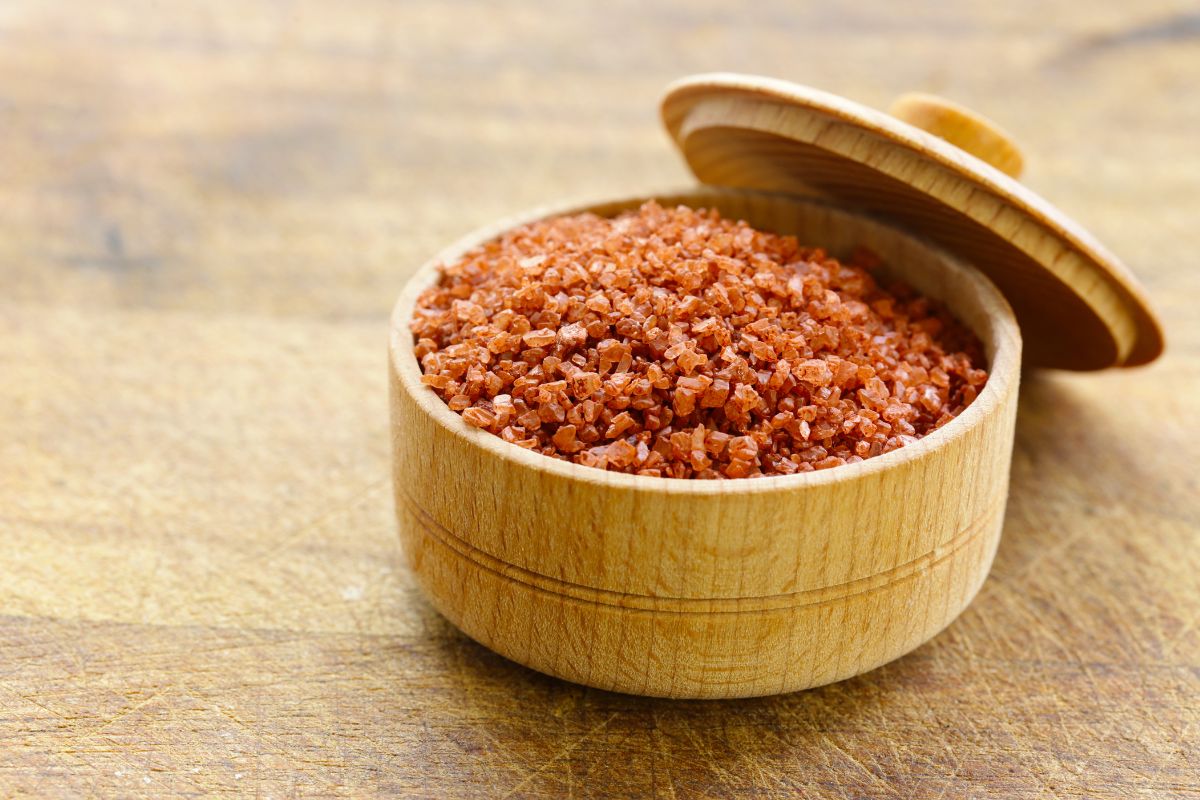Hawaiian red salt from the islands of Hawaii is a rare and expensive, red-colored gourmet salt with a slightly sweet earthy flavor. The crunchy salt is used in iconic traditional Hawaiian dishes like pipikaula and kalua pig.
Table of Contents
What is Hawaiian red salt?
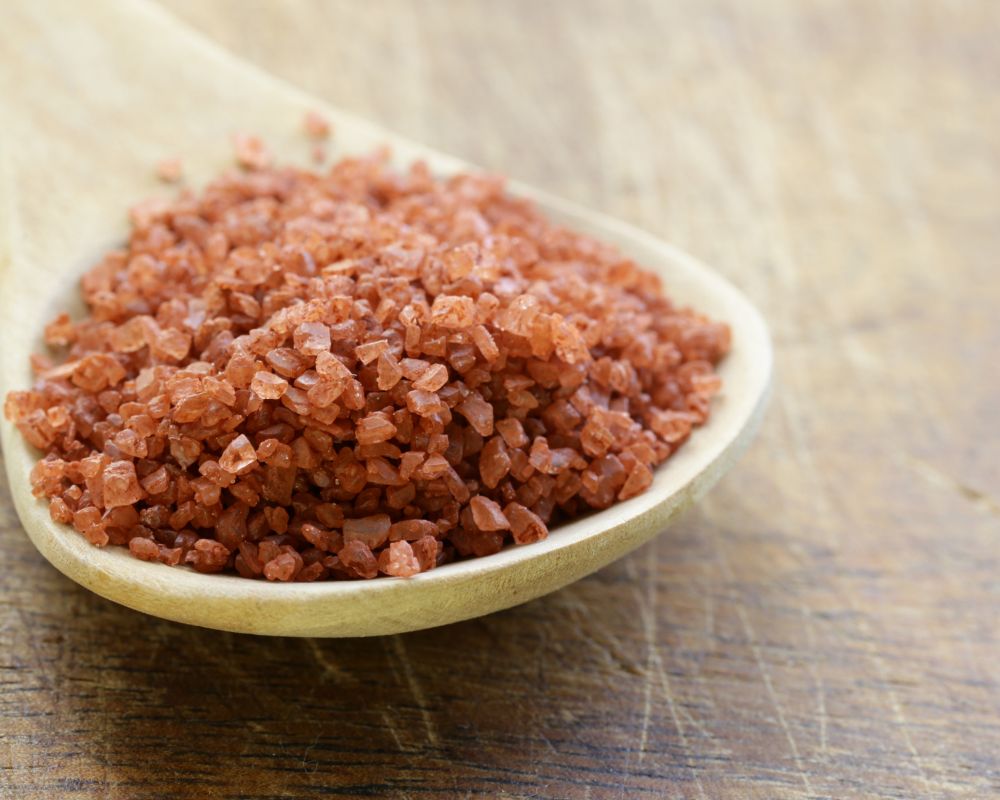
Also called alaea salt, Hawaiian red salt is an unrefined, all-natural sea salt mixed with alaea, an iron oxide-rich volcanic clay.
The rarity and heirloom nature of the salt earns it a seat at the table of Slow Food’s Ark of Taste, which enlists traditional products handed down over generations for preservation by their communities.
| Origin | Comes from the Hawaiian Islands, especially Molokai, and Kauai |
| Appearance | Has a crunchy texture and a brick-red color |
| Flavor profile | Has a smoother, mellower, and less salty flavor combined with an earthy, tangy, and slightly sweet taste with a buttery afternote |
Origin
Hawaiian red salt comes from the Hawaiian Islands, especially Molokai, and Kauai. When the red volcanic clay from local rivers floods into the sea, it is entrapped in tidal pools before natural evaporation creates the red alaea sea salt.
Native Hawaiians traditionally used the finishing salt to preserve meat and flavor cultural dishes like poke, kalua pig, and Hawaiian jerky (pipikaula).
They also revered the salt as sacred and used it for spiritual, medicinal, and cosmetic purposes.
Today, alaea red salt is gaining traction in the US and globally for its mellower, less salty flavor and stunning color it adds to dishes.
Appearance
Hawaiian red salt has a crunchy texture and a brick-red color (reddish-brown). Its characteristic color comes from the red color of the deposited Hawaiian clay.
Flavor profile
Like other types of salt, Hawaiian red salt has a salty flavor. However, it has a smoother, mellower, and less salty flavor. Its salty flavor combines an earthy, tangy, and slightly sweet taste with a buttery afternote.
The earthy flavor in the salt comes from the volcanic clay, which also adds a slight sweetness.
Nutritional Benefits of Hawaiian red salt
The digestible iron in Hawaiian red salt can help your body deal with issues related to low iron, such as lower energy levels, lack of focus, and reduced immunity.
Trace minerals like potassium, magnesium, sulfur, calcium, and phosphorus found in the salt help regulate the function of your organs and maintain healthy electrolyte levels in the body.
Hawaiian red sea salt can promote oral hygiene. A simple saltwater rinse makes it harder for harmful bacteria to thrive in the mouth, which helps reduce instances of sore throat, bad breath, and even gum inflammations.
If you are on a low-sodium diet, Hawaiian red salt can be a great alternative to regular salt in helping you avoid complications linked to excessive use of sodium chloride. It can help you reduce the risks of chronic kidney disease, stroke, diabetes, and heart disease.
What is Hawaiian salt used for?
Using Hawaiian red salt can give you a taste of the Hawaiian Islands right on your dining table. The salt is great for preserving fish and meats and seasoning soups, stews, vegetables, salads, and seafood. It adds bold color and flavor as a finishing salt to any cooked dish.
To elevate your Hawaiian experience, try the salt in traditional Hawaiian dishes like poke, pipikaula, and kalua pork.
Besides culinary applications, you can use Hawaiian red sea salt cosmetically in anti-dandruff treatments and DIY face scrubs.
Why is Hawaiian sea salt different from other types of salt?
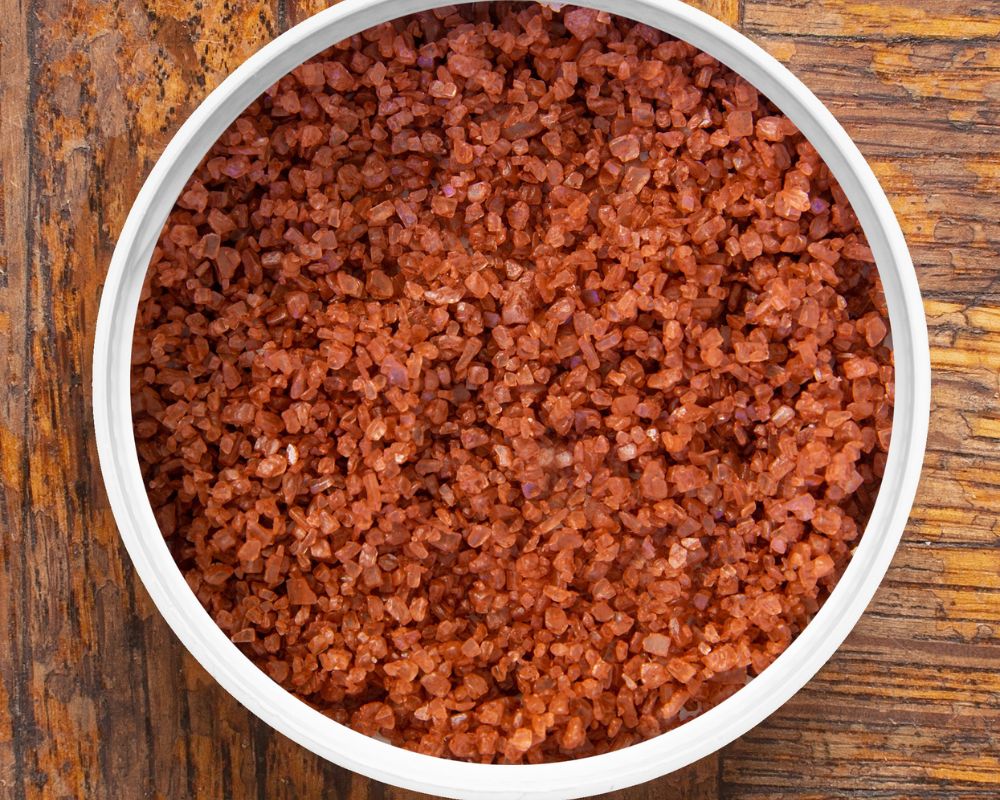

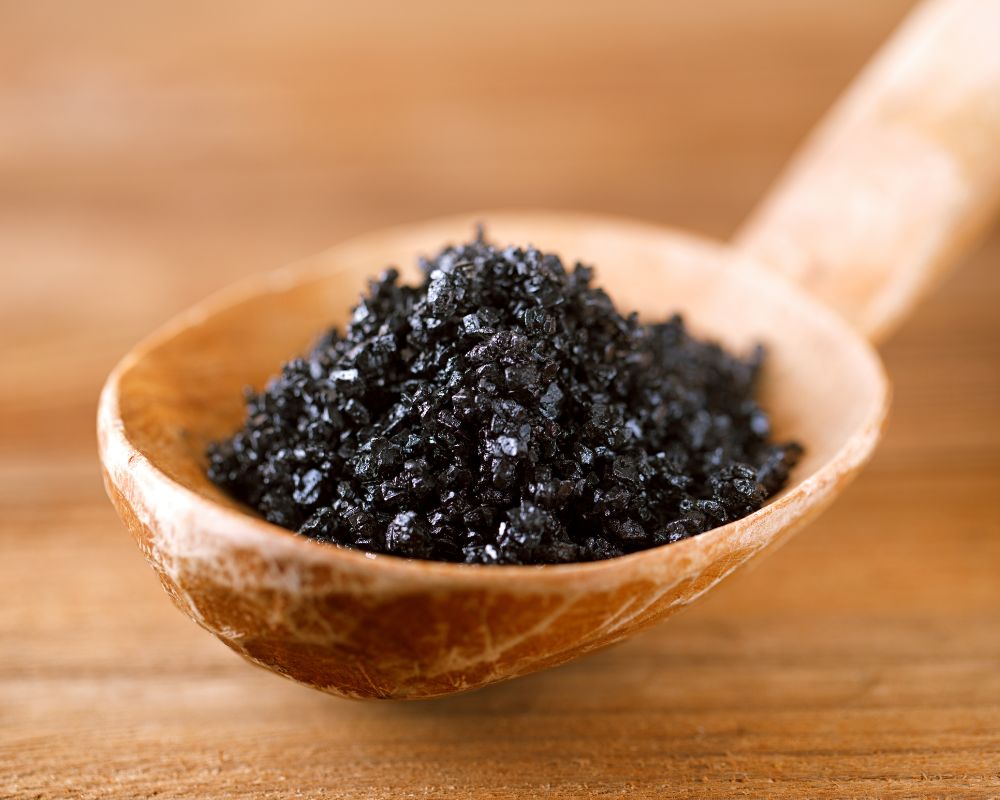
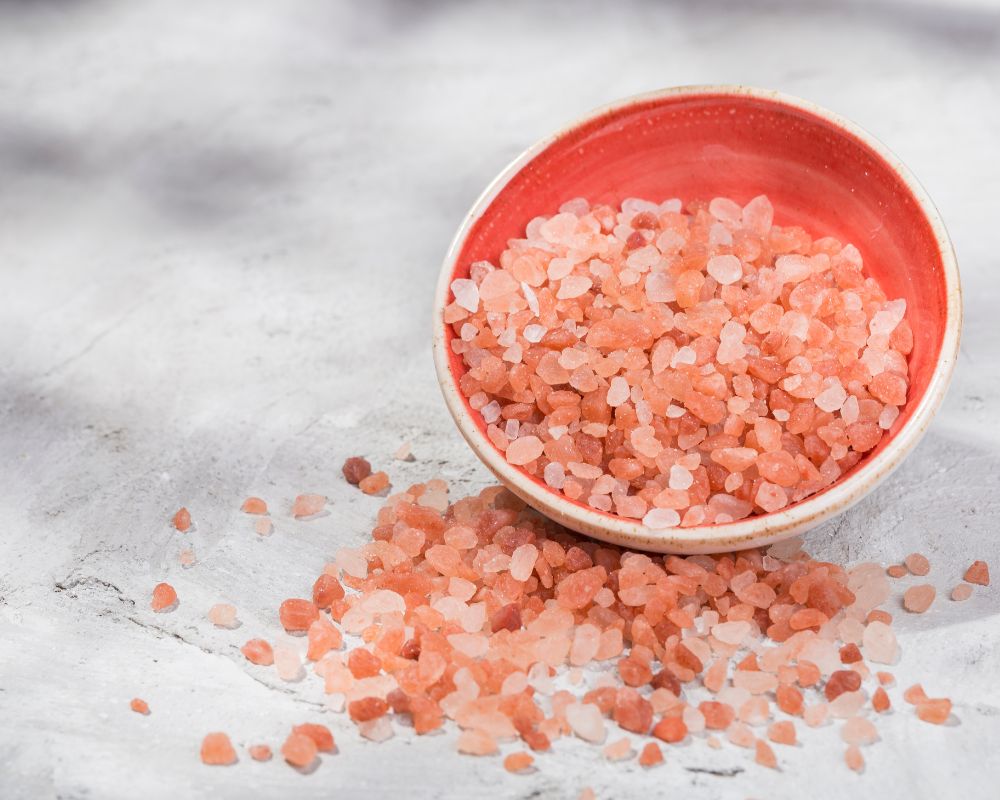
| Hawaiian red salt | Contains over 80 natural elements, trace minerals, anti-toxins, and electrolytes, less salty than other types of salts |
| Fleur de sel | Also a rare and expensive salt hand-harvested from shallow seawater pools along the coast of France, no articular taste |
| Hawaiian black lava salt | A natural sea salt harvested by hand and infused with activated charcoal from coconut shells, used as a finishing salt |
| Himalayan pink salt | Has up to 84 trace elements and minerals, harvested from the Himalayan Mountains in South Asia |
Unlike other salt types that contain a handful of minerals, Hawaiian red salt is packed with over 80 natural elements, including:
- Anti-toxins
- Electrolytes
- Magnesium
- Potassium
- Iron oxide
- Low amounts of sodium
Here’s how other types of salts compare:
- While Hawaiian salt is rich in flavor with its earthiness, fleur de sel (a key French spice) has no particular flavor and has a rough, crunchy texture.
- The earthy flavor of Hawaiian alaea salt contrasts with the charcoal-infused smoky flavor of Hawaiian black lava salt.
- Black lava salt is Hawaiian natural sea salt harvested by hand and infused with activated charcoal from coconut shells. It’s also used as a finishing salt.
- Himalayan pink salt harvested from the Himalayan Mountains in South Asia rivals Hawaiian red salt in composition. It has up to 84 trace elements and minerals, not to mention a sodium chloride concentration of up to 98%.
How is Hawaiian salt harvested?
Hawaiian red salt is harvested by hand from the open sea after the natural evaporation of alaea-sedimented seawater.
In some areas like Molokai, seawater combines with red alaea clay and is dried in custom-built solar evaporators that leave the red salt crystals behind.
After harvesting, the salt is usually kept in small amounts in shaker bottles or plastic resealable bags for large quantities.
Why is it so expensive?
Alaea red Hawaiian sea salt is expensive because of its rarity and hand-harvesting technique. Its natural formation process takes time, as does harvesting it by hand.

